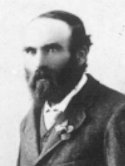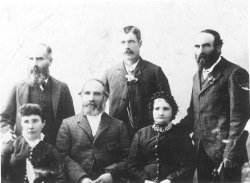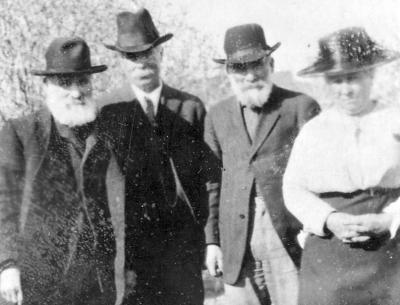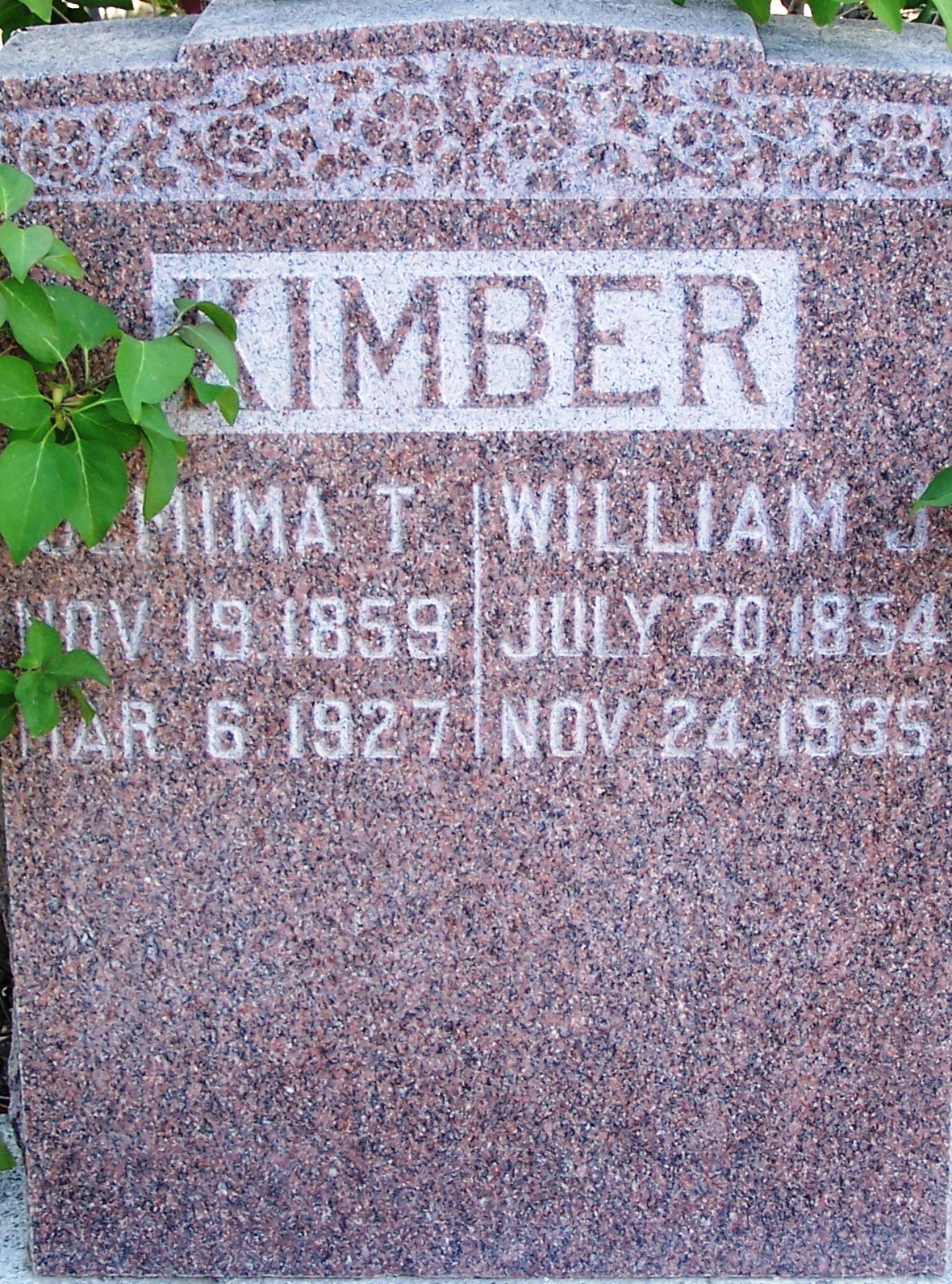 I William James Kimber was born on July 20, 1854, in Hampstead Norris, Berkshire, England. My father’s name was Charles Kimber. He was born in the Parish of Bucklebury, Berkshire,England, on August 31, 1818. He died in Grouse Creek, Utah in November 1900. My mother was Caroline Sellwood. She was born in Bucklebury, Berkshire, England, on March 23, 1816 and died at Grouse Creek on July 23, 1899.
I William James Kimber was born on July 20, 1854, in Hampstead Norris, Berkshire, England. My father’s name was Charles Kimber. He was born in the Parish of Bucklebury, Berkshire,England, on August 31, 1818. He died in Grouse Creek, Utah in November 1900. My mother was Caroline Sellwood. She was born in Bucklebury, Berkshire, England, on March 23, 1816 and died at Grouse Creek on July 23, 1899.
My father and mother were married in 1840. The first child was Edward, born on November 24, 1841. He died at Lyman, Idaho on October 6, 1925. The second child was Eliza Ann, born on January 11, 1843 and died in England. The fourth child was Fannie, born on June 20, 1847, and died in England on August 30, 1868. The fifth child was Charles Jr. and died at Grouse Creek on May 11, 1933. The sixth was William James (myself). The seventh was Elizabeth Ann born on January 6, 1856 and died at Grouse Creek on June 16, 1933.
I was baptized about eight years of age, but do not know where or by whom. The schooling I got was before I was eleven years of age. In the summer I worked for an old lady named Ozgood making bricks, and in the winter worked in the wood with my father. I worked a month or so with Jack Pocock driving a blind horse, hauling kindling wood to market. One time the horse got away, run into a store, and broke two big windows.
The first Elder of the Church that I remember was William Barlow.

Edward, Charles Jr, William, Elizabeth, Charles Sr & Caroline Kimber
I left England, starting from Liverpool on June 20, 1868, on the sailing boat “Emerald Isle.” We sailed for eight weeks before landing at Castle Gardens in New York on August 14, 1868. Much sickness and some deaths occurred on the vessel due to drinking bad water.
The members of the family, which came with me, were Father, Mother, Charles and Elizabeth. Edward came later.
We left New York for the West going by train to Council Bluffs, which was located on the Missouri River. We crossed over the river in a ferryboat in a rainstorm. Here we remained for a few days. We then loaded into cattle cars and traveled to Fort Benton, which is about four miles from North Platt. This was then the end of the railroad. The time was August 25, 1868. Men who had teams and wagons met us there. The Captain of the Company was James Rathall from Grantsville. The teamsters were James Kirk of Tooele, Utah; Armis Bates of Tooele, John Rydalsh and Lou Hales from Grantsville. We had mule teams. There were about 800 people came when I did. I don’t remember much of our trip across the plains. At Devil’s Gate a fish was caught and it was cooked for my mother’s breakfast.
We arrived in Salt Lake City about September 25, 1868. We remained there for about two days and then went to Tooele. We lived for a while with my mother’s brother, William Sellwood who lived a few miles out from Tooele. Then we moved into a one room house in Tooele. It was here that we spent our first winter in America. Our food consisted of potatoes, flour and beet molasses.

Edward, Charles Jr., William & Elizabeth Kimber
I chored for Matthew Pickett and received about $12.00 a month. I worked helping survey roads into Bingham. I helped in a sawmill in Soldier Canyon for Gus Goldsmith, then I worked again in Bingham cutting logs and sliding them down the hill for the mines. This was about 1870 or 1871. I helped make the foundation for the smelter for Godbee Brothers and after the smelter was built I cut what was called cord wood to be burned in the smelter. My brother Charles hauled it to the smelter, which was located in what was then called Rush Valley. I then went to work at the Old Hidden Treasure Mine in Dry Canyon for a man by the name of Tom Lee. We were snowed in there for about two months, and during that time we lived mostly on bacon and flour.
After leaving the mine, I drove team hauling bullion from the smelter to Salt Lake City. Then my brother, Charles, and I went into the Settlement Canyon, cutting and hauling saw logs to the sawmill.
We heard from Valison and Alma Tanner that there was a good place out in the Northwestern part of the State of Utah, which later was called Grouse Creek. So the following fellows and myself decided to come, which was in September 1875: Charles Kimber, Brig Bowen and Bill Garner. We came with teams and all the fellows that were already located there were Valison Tanner, Alma Tanner, Oliver Killgore, and John Fergeson. These men were employed herding cattle for men of the Settlements. We only stayed a few days, but while there we staked off a few places. We staked off where the W. J. Kimber Ranch is now, and where the Old Richard Warburton place now is. We then returned to Tooele.
In the same year Brig Bowen and I came back and stayed most of the winter at what is now called Winter Cabin just South of the Kimber Ranch. We stayed until February 1876. At this time Alma Tanner and I left for Tooele. We first went to Terrace and then to Foundland. At Foundland we met Richard Warburton, Bill Gohlyer and Ez Roeberry. They were after horses. We stayed a few days with them and then went to Tooele.
In the early spring of 1876 Jack Gordon and I went into the timber in Dry Canyon, cutting and sliding logs to be burned into charcoal. My father, my brother, Charles and myself left for Grouse Creek in May. We settled at what is now the Kimber Ranch. We made adobes and built a small house. The place is just below the pond on my ranch. We then returned again to Tooele.
The following December, 1876, I came back to Grouse Creek with a load of grain. With me were Charles Kimber, Alvin McCustion and a few others. The weather was very cold and I froze my foot. We stayed about a week, unloaded the grain, and returned to Tooele. Up to March 18, 1877, we had made several trips to and from Tooele, bringing, each time, grain and other items. On March 28, 1877, we came to Grouse Creek to remain. On this trip my brother Charles, his wife, and baby came with us.
We cleared ground and planted wheat and harvested a good crop that fall. This was the first crop of grain to be harvested in this vicinity. In the fall of the same year my father and mother came out, and we built a log house on the ranch. We hauled the logs from the hills Northwest of Grouse Creek. We used a cradle to harvest the wheat and then took it to Tooele to grind it into flour.
I worked on the place part of the time and worked part of the time for other fellows. Sometimes I took horses for part of the pay. We took the second grist of wheat to be ground the next year.
About 1880 Patsy Haley and myself went upon the Snake River to the American Falls. The said Haley bought a ranch there and I brought a wagon back. Then I helped take his cattle up there. I was the cook of the outfit. I then went to work helping take some stock to Clear Creek for Swabacker and Lewis.
The Indians at that time were not very friendly. The people here made an attempt to make a Fort but it was never completed. The people all over the country were alive to the situation and not much damage was done.
About 1881 I cooked for the J.C. Armstrong Cow Outfit. They later became Sparks and Tinnen. I worked through the summer, mostly around the Grouse Creek country. I helped build a corral just below where Hardesty Creek enters into Goose Creek. That was one of the first corrals of this country. It was large enough to hold about 300 head of cattle. It was a buck fence and the first night the cattle were put into it they stampeded and took out one side.
The next job was helping build a corral and house for David Thomas. Some of the sheds and house still stand. That was about 1882 or 1883.
The next job was to help build a fence on the Big Meadows North of Montello, Nevada. We put up some twenty miles of fence and was about six weeks doing it. Some of the fellows that helped were William Shaw, Bill Gray, Charles Kimber, George A. Cook and Joe Stuart. I did most of the cooking for the outfit.
I was interested in a few cattle and horses. The ranch was being improved a little at a time. In 1889 I was married to Jemima Mumford Tanner and in 1890 our first child was born. Living on the ranch at this time was my father and mother, my sister, Elizabeth and her husband. The ranch was then producing about seventy-five tons of hay and 800 bushels of grain. The ranch was improved until in 1918 when 190 tons of hay, besides garden vegetables and fruits were raised. I had a grain binder with which I used to cut grain in Etna and Grouse Creek for other people.
In 1899 my mother died and then in 1900 we had scarlet fever, which resulted in the death of our daughter, Bertha Caroline. Then, in the fall of the same year, father passed away.
I bought my father’s share of the ranch and also paid the Railroad Company $660.00 for 160 acres. Later I bought 120 acres from the State. The first trees planted on the land were planted there in 1889-90. Others have been added since the reservoir was built in 1918. Most of my later years were spent on the ranch. In the winter months my wife would take the children to Grouse Creek to go to school.
A few winters I spent prospecting for ore in the vicinity of Jackson Mine, which is North and East of Montello, Nevada. One carload of ore was shipped in about 1913.
My wife and I moved to Grouse Creek in 1921 to live. There I remained most of the time until 1935. My wife died in 1927 and I have been living alone since that time. I buried my last daughter in 1934. I have six sons still living. They are: William C., Thomas E., Joseph A., Lawrence J., Alvin and Howard. I spent November conversing with my sons.
When I first came to Grouse Creek, the country was very beautiful. It was covered thickly with grass. Wild game abounded plentifully everywhere, especially deer and antelope. In the winter the rabbits would gather in bunches of thousands. Beef cattle could be had from the winter range. Several meadows from which hay could be cut were also found. There were no fences and no land surveyed. A squatter’s right was all that prevailed except when a few years later the six-shooter played quite a part. There were several beaver dams on the creek South and East of the Kimber Ranch.
William James Kimber was a good manager and also a farmer. He had an apple orchard on his ranch and furnished apples for the community’s use. His ranch was about half way between Grouse Creek and the railroad station and served as a stopover place for ranchers, who were trailing their cattle for shipment. Many travelers were glad to find a nights lodging at the Kimber Ranch.
After his wife died he lived alone. He kept his house very clean and did many extra things, such as canning fruit and making jam. His daughter, Clara Ballingham, was very good to him and helped him all she could until her death. He spent a lot of time repairing shoes for the children and was quite busy until the end.
He passed away on November 24, 1935, at the age of eighty-one years and is buried in the Grouse Creek Cemetery.

